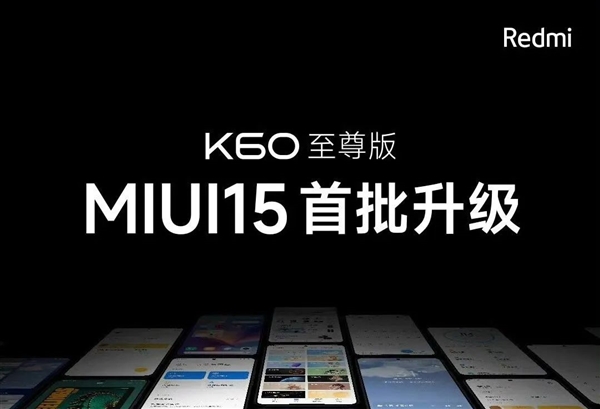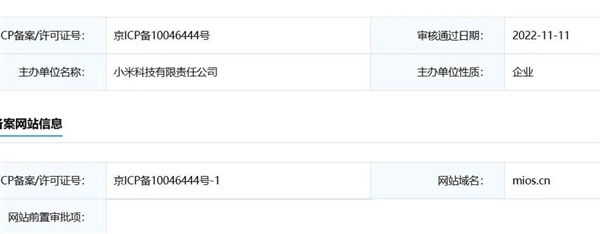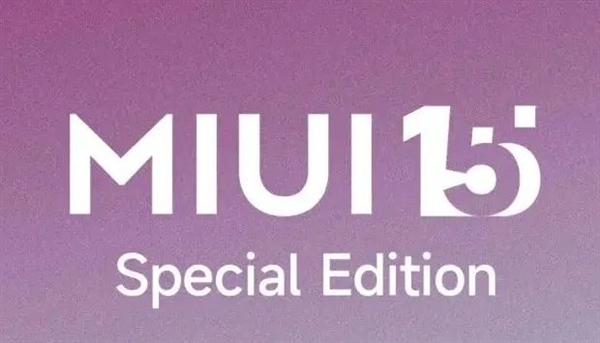Yesterday, Weibo V broke the news: MIUI 14 released at the beginning of the year, will be the last official big version of MIUI.
As soon as the news came out, Redmi K60 Supreme users were dumbstruck:
What about the first MIUI 15 upgrade?
Just released two months, Red rice flagship become “abandoned ship”?
Don’t worry, this micro blog means that the subsequent operating system of Xiaomi mobile phones will switch from Android-based MIUI to independently developed MiOS!

This is not an empty story.
As early as a year ago, Xiaomi filed the mios.cn domain name in the Ministry of Industry and Information Technology, semi-publicly acknowledged its existence.
But Xiaomi has not yet launched any content, so now access can only see 403 Forbidden.

According to the Revelations, the new MiOS is by no means a renamed version of MIUI 15, and is known as a “full-end self-developed system”
“All-in-one” means that, like Huawei’s HarmonyOS, it will not only run on phones, but also on tablets, watches, TVS, and even cars.
“Self-research” everyone understands that the bottom of the system should be completed by Xiaomi itself.

However, in order to have an APP and not fall into the desperate situation of Microsoft WP system at that time, it still has to be compatible with AOSP to run Android apps.
In addition, the self-developed MiOS will also be further slimmed down on the basis of MIUI 14, that is, more pure and less pre-installed applications.
In terms of devices, blogger “Digital Chat Site” suggests that the Mi 14 is expected to be the first smartphone to launch MiOS.

About the millet 14 series of Revelations, you must have seen a lot:
For example, the new “four-cylinder” lens Deco and the “domestic” OV50H main camera;
The standard version of Mi 14 will continue the small-screen flagship positioning, and equipped with a narrower bezel straight screen;
And the well-known Snapdragon 8 Gen3 processor.

This time with a self-developed MiOS, the point of view directly pulled full –
If Apple and Huawei’s conference is a “technology Spring Festival Gala”, millet at least this time also counts as a Lantern Festival!
But when it comes to the biggest winner, it must be the nail household “Mi 6.
According to incomplete statistics, the current Mi 6 can be brushed into the system includes but is not limited to:
MIUI 8 to MIUI 14; Native Linux system Ubuntu Touch; Win 10 ARM and Win 11 ARM on PC;
Recently, some netizens have been brushing OpenHarmony and HarmonyOS 4.0 tutorials…
Kill me also do not believe that there will be no great God netizens to millet 6 transplant MiOS!
You can even look forward to the MiOS and MIUI dual system.
However, there are now Revelations that Xiaomi is still testing the MIUI 15 update internally.
There are also Revelations that MiOS will be limited to the domestic market, and the overseas version of Xiaomi mobile phones will still run MIUI 15.
If you ask me, at this point, it’s better to add some Chinese characteristics
It’s called CNMiOS!
It’s both local and a vision.
Xiaomi launched MiOS this time is not sudden, after all, many “friends” have done so long ago:
For example, some time ago, “Russian Hongmon”, a Linux-based self-developed system run by R-FON mobile phones, ROSA OS.
NeoWin believes that it should be a modified version of the Android AOSP system, which can run Android apps, but does not have Google GMS services built in.
The most successful in this regard is HarmonyOS, which has now evolved into HarmonyOS 4, and HarmonyOS NEXT, which is completely separate from Android, is also coming soon.
Moreover, its native app development progress is also far ahead: Tencent has just announced the adaptation of wechat, King of Glory then on.
In contrast, if Xiaomi wants to achieve the size and status of Hongmeng, it obviously has a long way to go.
For rice fans, the introduction of MiOS has many benefits, such as a closer combination of hardware and software, better optimization, and fewer bugs;
It is not without harm that… MiOS may further tighten the unlock permissions, or even simply do not give the unlock root option, and do the same “closed source system” as HarmonyOS.
Do you think this trend is good or bad?









